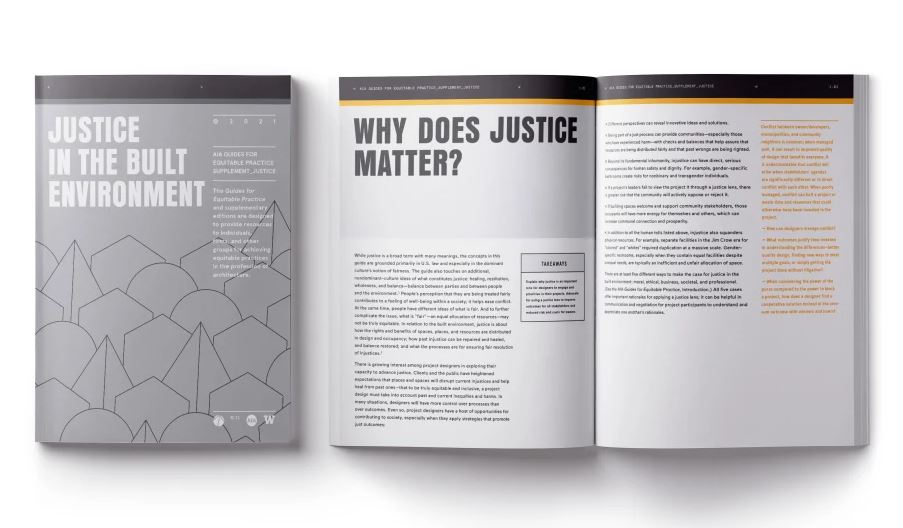
The American Institute of Architects (AIA), in partnership with the University of Washington and the University of Minnesota, has published a supplementary edition of the Guides for Equitable Practice, titled Justice in the Built Environment.
The latest edition serves as a guide to architects and design professionals interested in doing more to advance justice in the context of their design work. It also provides perspective to architects curious about whether there is anything an individual practitioner or firm can do to help advance equity in the built environment and in society.
This new resource is designed to empower architects to use their problem-solving skills to create welcoming spaces for all. It also provides perspectives and insights on how architects, in all types of workplaces, can help advance equity in their place of employment, projects, and in society.
Lakisha Ann Woods, EVP/Chief Executive Officer
There was increasing demand for how one explains the value of equitable practices to others, especially clients. This guide is about understanding that larger context that is not necessarily architectural practice-specific, but more about how design is perceived by others.
Renée Cheng, FAIA, the project lead on the supplement’s research and writing team
There are at least five different ways to make the case for justice in the built environment: moral, ethical, business, societal, and professional. The supplement outlines each area and encourages readers to think through which one might be most relevant for their project or portfolio of projects.
AIA says it has a long-term commitment to ensuring the profession of architecture is as diverse as the nation its members serve. Building on its body of work and resources, AIA partnered with the University of California Hastings College of the Law to publish a study last year that sheds light on the impacts of bias in the workplace. The report also offers resources and strategies that can help move the needle on equity, diversity, and inclusion in the architecture profession.
Visit AIA’s website to download Justice in the Built Environment, a supplement to AIA’s Guides for Equitable Practice. AIA, in collaboration with ACSA, will publish an additional supplemental edition to the Guides for Equitable Practice later this year that will address inequities in architecture academia.
